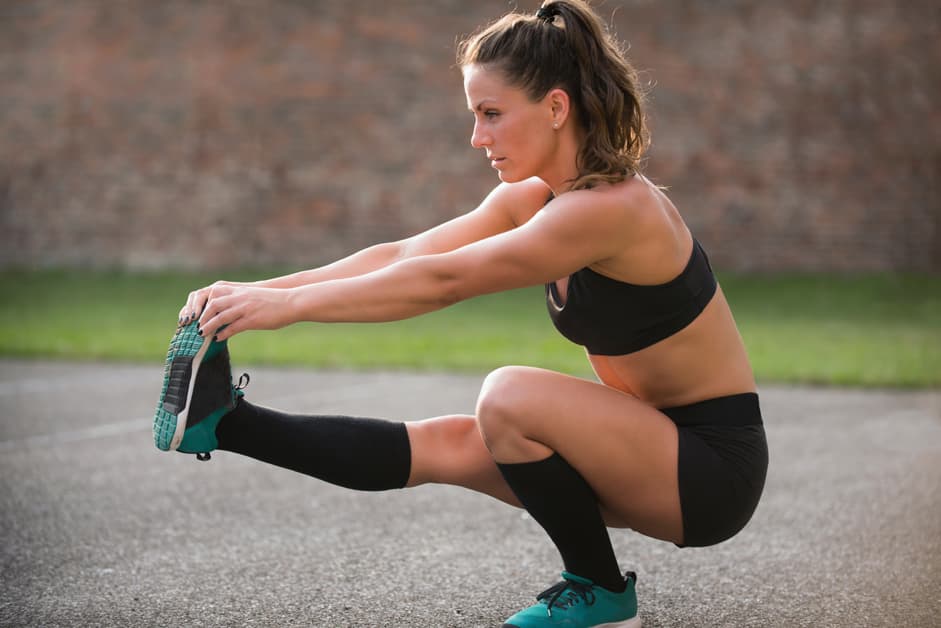Introduction
Millions of people all over the world are affected by knee osteoarthritis. This condition causes chronic joint pain and stiffness, which can decrease mobility and impact daily tasks.
Balance training is an excellent way to help manage osteoarthritis. It can relieve symptoms, help maintain mobility, and enhance balance and coordination. This article will explain the advantages of balance training and how it can be included in a routine for people with knee osteoarthritis.
Definition of Osteoarthritis
Osteoarthritis is a joint disorder. It occurs when components that make up bones, ligaments, and joints decrease in production. This leads to inflammation, stiffness, and pain. Osteoarthritis usually affects weight-bearing joints, like the hands, knees, hips and spine. If left untreated, it can cause disability.
No cure exists to regenerate lost cartilage tissue. However, medical treatment is available that can reduce discomfort and help long-term health. Weight management and exercise tailored to people with knee osteoarthritis is one way to help. Doing exercises that balance muscle strengthening on sides of the knee and relaxing certain muscles can help maintain a balance between loading forces on the knee during everyday activities or exercise.
Symptoms of Osteoarthritis
Osteoarthritis (OA) is a joint disease which happens when the protective cushion at the end of bones, cartilage, wears away. Symptoms include pain, stiffness and reduced range of motion in the affected joint. When moving, it can cause grinding or clicking sensations.
Keeping a healthy weight, exercising often, and avoiding repetitive movements can help reduce these symptoms. Too much physical activity can cause more intense pain and inflammation. Therefore, finding a balance between exercise and rest is important.
For those with knee OA, balance training routines may be beneficial. They are designed to strengthen knee joints while reducing stress on them.
Balance Training
Balance training is essential for those with knee osteoarthritis. It boosts strength, stability and reduces the risk of falls. Balance training helps ease pain, enhance gait and postural control.
There are two types of balance training: static and dynamic. This could include balance boards, bosu balls and single leg stand. In this article, we’ll explain more about the advantages of balance training and how it can help those suffering from knee osteoarthritis.
Benefits of Balance Training
Balance training is a form of physical therapy which improves balance. It helps both static and dynamic balance, such as standing still and moving coordination. It is especially beneficial for people with knee osteoarthritis, as it reduces their risk of falls and joint damage.
The main benefits of balance training are:
- Improved muscle control – Balance training encourages the body’s control systems and gets the joints used to working together.
- Enhanced stability – Balance training helps develop the skill of stability when moving.
- Improved posture – With better balance, you can have more control over your posture outside of activities.
- Reduced risk of falls – Balance training helps prevent instability while standing or moving.
- Increased muscular strength – Muscles become stronger from balancing exercises, allowing you better access to activities without sacrificing performance.
Types of Balance Training
Balance training is great for people with knee OA. Speak to your doctor or PT before doing any exercises. Activities may challenge the muscles, improve coordination, and help with cognitive tasks.
Dynamic balance training uses bodyweight exercises that adjust quickly to environment changes. Examples: walking a narrow beam, transferring objects, and reaching activities with one arm.
Static balance training focuses on body control & stability without movement. Examples: one leg stands, heel-to-toe walking, head turns with weighted items, hopping on one leg, squats, step-ups onto a box.
Do both dynamic and static balance training together or separately. Modify each exercise to your comfort level & capabilities. Start easy and increase intensity as you get stronger. Enjoy each activity to stay motivated!
Balance Training for People with Knee Osteoarthritis
Benefits of balance training for those with knee osteoarthritis are undeniable. It can enhance the stability of the knee joint and diminish pain. Also, balance training is a great way to prevent falls and injuries, particularly for those with knee osteoarthritis – who are more prone to falls due to knee instability.
Here, we will explore the various balance training exercises to better balance and stability for people with knee osteoarthritis.
Exercises for Strengthening Muscles Around the Knee
Muscles that support the knee joint can be strengthened through exercises. This helps reduce pain and disability caused by knee osteoarthritis. Move slowly and carefully to avoid injury. Your physical therapist may put you on a resistance program tailored to your needs.
Strengthening exercises include:
- Quadriceps Strengthening which includes wall squats, forward squats, strap squats, leg extension machines, elastic band exercises and split squats.
- Hamstring Strengthening which includes prone hamstring curls with a band or ball, bridges with bands and unilateral bridges with a medicine ball.
- Calf Strengthening which consists of standing calf raises with weights, seated calf raises with cables or machines, toe presses with stairs/step blocks, heal slides with an elastic band around ankles and static ankle dorsiflexion.
Stretching Exercises
Stretching is a must for anyone with knee osteoarthritis. It strengthens muscles and increases flexibility. Each person’s condition requires different stretches. Combining stretching with strengthening and stabilization exercises is the best way to help balance. Before starting, check with a healthcare provider first, and use correct form while stretching.
Some common stretches include:
- Quadriceps stretch. Stand straight, hand on waist-high surface, and slowly bend one leg back until a stretch is felt. Hold for 20-30 seconds, repeat 1-3 times per side.
- Hamstring stretch. Lie face up, bring one leg up until stretched. Hold for 20-30 seconds. Repeat 1-3 times per side.
- Piriformis stretch. Sit upright, cross one ankle over other knee. Tilt upper body slightly forward until a gentle pull is felt in buttocks. Hold 15-20 seconds, repeat 1-3 times per side.
- Calf muscle stretches. Stand two steps away from wall, lean towards it. Move both feet back alternately, feeling tension in calf muscles. Hold each position for 15-20 seconds, repeat 1-3 times per side.
Balance Exercises
Balance exercises are essential to reduce the risk of falling and improve overall stability for people with knee osteoarthritis. They help build the strength and endurance of your legs, core, hips, and lower back. Plus, the muscles around your knee joint!
Balance activities come in two categories: static exercises and dynamic exercises. Static exercises involve one or two positions, typically 10-20 seconds. Examples include single-leg stands, wall sits with arms crossed, and standing side stands.
Dynamic balance activities involve moving body segments with control. Like walking on an uneven sidewalk, turning around often, or stair climbing.
You can progressively challenge each type of exercise. By altering protocols like duration or changing posture/direction during more complex activities. Before beginning any new exercise program, consult your healthcare professional. To make sure it’s appropriate for your individual needs.
Conclusion
Evidence shows that balance training, in exercise programs for people with knee osteoarthritis, can improve posture and reduce the risk of falls. This boosts overall health, activity, and quality of life. Health care professionals should factor this in when assessing, treating, and providing exercise programs.
Contraindications such as pain or stand-up strength deficit must be checked before prescribing balance routines. Balance exercises should be personalized to the individual’s injury history and abilities. Progression of balance protocols should be monitored regularly to get the most benefit.
Frequently Asked Questions
Q: What are some of the benefits of balance training for people with knee osteoarthritis?
A: Balance training can help strengthen the muscles around the knee joint, improve posture, decrease pain, and help with overall mobility.
Q: What type of exercises should be included in a balance training routine for someone with knee osteoarthritis?
A: Exercises should be low-impact and focus on balance, flexibility, and strength. Examples include: side leg raises, single leg stand, heel and toe walks, and balance board activities.
Q: How often should balance training exercises be done?
A: Balance exercises should be done at least 2 to 3 times per week to see results. It is important to start slowly and gradually increase the intensity of the exercises as you become more comfortable.





